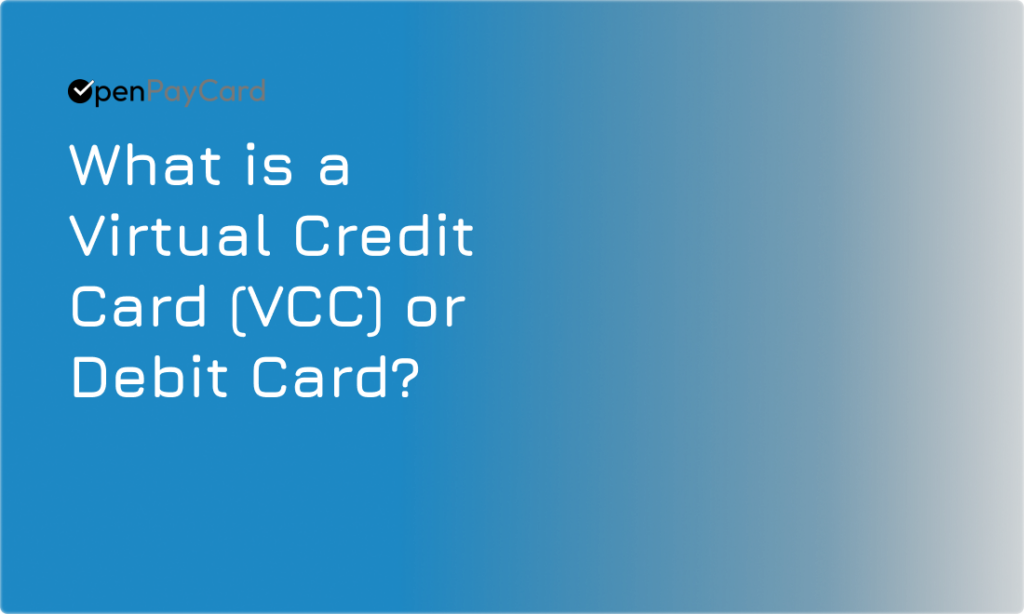Virtual credit cards are an exciting step towards smart company spending. They give businesses a more secure, more personalized, and more trackable way to pay for things online.
These digital cards empower employees to make necessary payments directly from their computers. They are swift, exceptionally secure, and significantly simplify the management process for finance departments.
It’s somewhat surprising that many companies still predominantly rely on traditional corporate credit cards.
However, let’s not jump too far ahead. We will delve into all the details you need to know about employing virtual credit cards (VCCs) in your business operations.

Keywords: Virtual Credit Card, Digital Transactions, Online Security
Section 1: The Basics of Virtual Credit and Debit Cards
What Exactly Are Virtual Credit and Debit Cards?
Virtual cards function similarly to your traditional plastic cards, but they exist only in the digital realm. They’re like the secret agents of your wallet, working undercover to protect your financial information. These cards come with unique card numbers, expiration dates, and security codes, just like physical cards, but they reside safely in your phone or computer.
The Magic Behind the Numbers
When you use a virtual card, you’re essentially using a temporary and sometimes disposable version of your real card number. It’s like having a digital disguise for your real card details every time you shop online.
Fun Fact: Did you know that the first credit card was issued in 1950 by Diners Club? It revolutionized the way we pay, and now virtual cards are taking it a step further!
Section 2: Why Use a Virtual Credit or Debit Card?
The Superpowers of Virtual Cards: Security and Convenience
- Enhanced Security: One-time use numbers mean even if data is compromised, your real card details remain safe.
- Easy Management: Control spending limits and track expenses with a few clicks.
- Convenience: Instant issuance and no need to carry a physical card.
Are Virtual Cards Safer?
Think of it this way: would you rather give out your home address or a P.O. box number to a stranger? Virtual cards act like that P.O. box, keeping your real details under wraps.
Section 3: The Downsides – Are There Any?
Potential Pitfalls of Virtual Cards
Even superheroes have their weaknesses, and virtual cards are no exception. Issues like limited acceptance in some scenarios and potential challenges with returns or refunds are the kryptonite to these digital wonders.

Section 4: Real-World Examples – Virtual Cards in Action
Case Studies: How Virtual Cards Saved the Day
- The Online Shopper: Meet Jane, who avoided a massive headache when her virtual card details were stolen, but her actual account remained untouched.
- The Business Traveler: John’s virtual card allowed him to manage travel expenses without the risk of losing a physical card.
| Feature | Virtual Credit Card | Virtual Debit Card |
|---|---|---|
| Definition | A digital version of a traditional credit card is used for online transactions. | A digital form of a traditional debit card, used primarily online. |
| Primary Use | Online shopping, subscriptions, and booking services. | Online purchases, bill payments, everyday transactions. |
| Security | Unique, temporary card numbers for each transaction. | Similar temporary or unique numbers enhancing online security. |
| Issuance | Instantly generated via banking apps or online services. | Instantly available through banks or financial service providers. |
| Physical Presence | Exists only in digital form, no physical card. | No physical card, purely digital. |
| Spending Limit | Based on credit limit of the underlying credit card. | Linked directly to the account balance. |
| Global Acceptance | Widely accepted wherever credit cards are used online. | May have limitations depending on the merchant’s acceptance. |
| Risk of Loss/Theft | Lower risk as no physical card to lose; details are harder to steal. | Similar lower risk due to lack of physical card. |
| Convenience | High, especially for frequent online shoppers. | High, useful for quick and secure access to funds. |
| Refunds/Returns Handling | Can be complicated if the virtual card number expires. | Easier as funds go directly back to the linked account. |
| Typical Users | Online shoppers, travelers, subscription service users. | Individuals preferring to use existing funds for online purchases. |
| Examples | Booking hotels/flights online, online marketplaces. | Online retail shopping, small online transactions. |
This table provides a clear, side-by-side comparison of Virtual Credit and Debit Cards, making it easy for readers to grasp their similarities and differences. You can further elaborate on each point in your article for a more comprehensive understanding.
Conclusion: Embracing the Future of Digital Payments
So, what do you think? Are virtual credit and debit cards the future of online transactions? They may not be perfect, but they’re a giant leap forward in our digital world. They offer a unique combination of security and convenience that’s hard to beat. Whether you’re a shopaholic, a business mogul, or just someone who loves a good gadget, virtual cards are worth considering.
Final Thought: Remember, with great power (or great convenience) comes great responsibility. Stay safe and savvy in your digital dealings!
This outline gives you a strong starting point for your article. You can expand each section with more details, examples, and a conversational tone to hit that 3,000-word mark. Don’t forget to sprinkle in humour, ask engaging questions, and use short, snappy sentences to keep your readers hooked!








